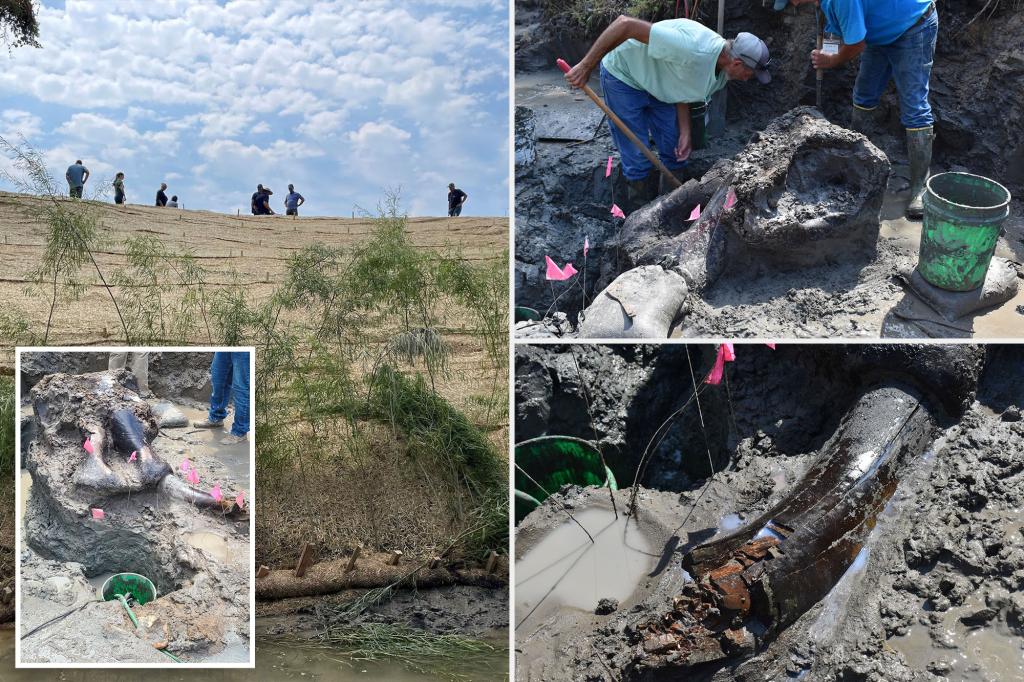Archeologists in Iowa recently unearthed a well-preserved mastodon skull from a creek, marking the first time such a discovery has been made in the state. It took 12 days for excavators to carefully recover the massive fossil, which still had a significant section of its tusk intact. Radiocarbon dating indicated that the mastodon died in the Paleoindian period around 13,600 years ago, shedding light on its age and history.
Mastodons, distant relatives of modern-day elephants, went extinct in North America around 10,500 years ago, possibly due to climate change and hunting. While other remains of the mastodon were found, the skull was the most well-preserved part of the skeleton, with a 2-foot section of tusk described as a “goldmine” by archeologists. Scientists are eager to learn more about the mastodon and how humans may have played a role in their extinction.
The discovery of the mastodon skull may also provide insight into human history, particularly regarding the possible connection to Native Americans who lived in the area during that time. The age of the fossil aligns with the migration of Native Americans into south-central Iowa, suggesting a possible interaction between humans and these giant creatures. The OSA will investigate further to determine if any human-made marks are present on the skeleton, which could offer clues about the relationship between humans and mastodons.
Despite the recent excavation of the mastodon bones, the site where they were found had been reported to the OSA back in 2022 due to erosion. Once the bones are thoroughly studied and analyzed, they will be featured in a new exhibit at the nearby Prairie Trails Museum. This discovery adds to the scientific knowledge of mastodons, their extinction, and their potential connection to human activity in the region.
The discovery of the mastodon skull in Iowa is significant not only for the state but also for the field of archaeology and paleontology. The find provides a rare opportunity to study a well-preserved mastodon specimen and gain valuable insights into the ancient history of the region. By examining the remains and conducting further research, scientists hope to unravel the mysteries surrounding the mastodon’s life, death, and eventual extinction.
The mastodon skull discovery in Iowa serves as a reminder of the rich prehistory of North America and the fascinating creatures that once roamed the land. As archeologists piece together the story of this ancient mastodon, they also uncover details about human interactions with these majestic animals. Through careful study and analysis, the mastodon bones will shed light on the past and deepen our understanding of the natural world and the history of the region.













